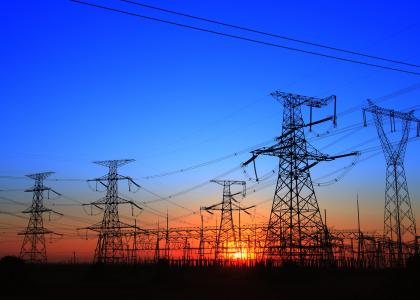Energy efficiency may face further setbacks in Ohio. Earlier this year, the Public Utilities Commission of Ohio (PUCO) issued an order canceling Columbia Gas's proposed voluntary energy efficiency programs and raising the monthly customer charge to $58—setting a precedent against future utility efficiency programs in the state.
PUCO reasoned that there’s no need for utility efficiency programs in the state—except for low-income ratepayers—because the competitive retail market will provide energy efficiency services in the absence of utility-run programs. However, this has never been borne out in practice.
Making energy efficiency improvements in homes or commercial buildings brings many benefits, but that doesn’t automatically make it an easy business. For one, it’s difficult to market: by definition, energy efficiency is avoided usage. It’s hard to sell an invisible product, and it’s even harder for most consumers to prioritize something they cannot see. According to a 2016 survey of 3,000 North American residential utility customers, 53% reported spending five minutes or less per month reading their utility bills.
It’s even more difficult for companies to decide to make energy-saving investments in their buildings. Real estate professionals sometimes use a rule of thumb called 3-30-300 for comparing utility, rent, and labor costs. A company that spends $3 per square foot on energy costs could be expected to spend $30 per square foot for rent and equipment, and $300 per square foot on payroll and benefits. A company’s decision-makers are unlikely to prioritize the $3 issue ahead of the $300 and $30 issues, even if they could make cost-effective investments toward lowering those $3 costs.
This market failure can be called the “low prioritization of energy issues” for consumers, and there are at least seven other market barriers that hinder the development of a robust retail market for energy efficiency services.
Market failures impeding energy efficiency is a problem we’ve known about for decades. In 2001, ACEEE conducted nearly 100 interviews with energy service companies, retail electricity commodity suppliers, and distribution utilities—all operating in states with restructured electricity markets—to explore the premise that private market actors could displace the need for government and utility energy efficiency programs. Our research found that new, independent, private market activity in energy efficiency services largely did not emerge in restructured states. To the degree that market players engaged in energy efficiency, it tended to be coordinated with government and utility energy efficiency programs.
Recent surveys show that states that require and incentivize utilities to provide energy-saving programs have consistently and significantly outperformed states that rely on private vendors. For instance, a 2019 ACEEE policy brief found that states with an energy efficiency resource standard (EERS) policy in 2017 had average energy efficiency savings four times higher than states without an EERS (an annual incremental savings of 1.2% of retail sales for EERS states compared with 0.3% for non-EERS states).
This clear evidence is sometimes unabsorbed by policymakers and regulators. In Ohio, PUCO and the Ohio Consumers’ Counsel have opposed efforts by the utilities to provide optional, voluntary energy efficiency services to Ohioans (beyond low-income ratepayers), relying on the hope that the retail marketplace will deliver cost-effective energy efficiency services. Explaining its recent decision to prohibit Columbia Gas from offering even voluntary market-rate energy efficiency services, PUCO ignores the reality of energy efficiency market failures when it states that “customers who wish to manage their usage will continue to have access to energy efficiency measures through the competitive marketplace.”
Despite PUCO’s belief, it does not appear that Ohioans ever had such “access” through the competitive marketplace. Ohio has had plenty of time and opportunity to provide energy efficiency, but it never emerged. Ohio’s electricity market restructuring law passed in 1999. Although the restructured market began full service in 2005, there has been no robust retail market for energy efficiency in Ohio. As a result, the Ohio legislature in 2008 passed a law establishing an EERS, requiring that statewide electricity consumption be reduced by 4,300 gigawatt hours by 2030, with interim targets. According to the Midwest Energy Efficiency Alliance, the law saved Ohioans $5.1 billion on utility bills from 2008 to 2017, cut energy use by 49 million megawatt hours (enough to power every home in Ohio for roughly 10 months), and supported more than 80,000 Ohio workers. Despite these enormous benefits, the Ohio legislature in 2019 passed House Bill 6, eliminating the state’s EERS after 2020.
The effect of House Bill 6 has been clear: it led to avoidable energy use and higher utility bills. In ACEEE’s 2019 State Energy Efficiency Scorecard, Ohio ranked 33rd in the nation, but it dropped to 44th by the 2022 Scorecard. A reliance on the competitive retail market alone to deliver energy efficiency services is very unlikely to restore the energy cost savings that utility-run programs once provided to Ohioans.



